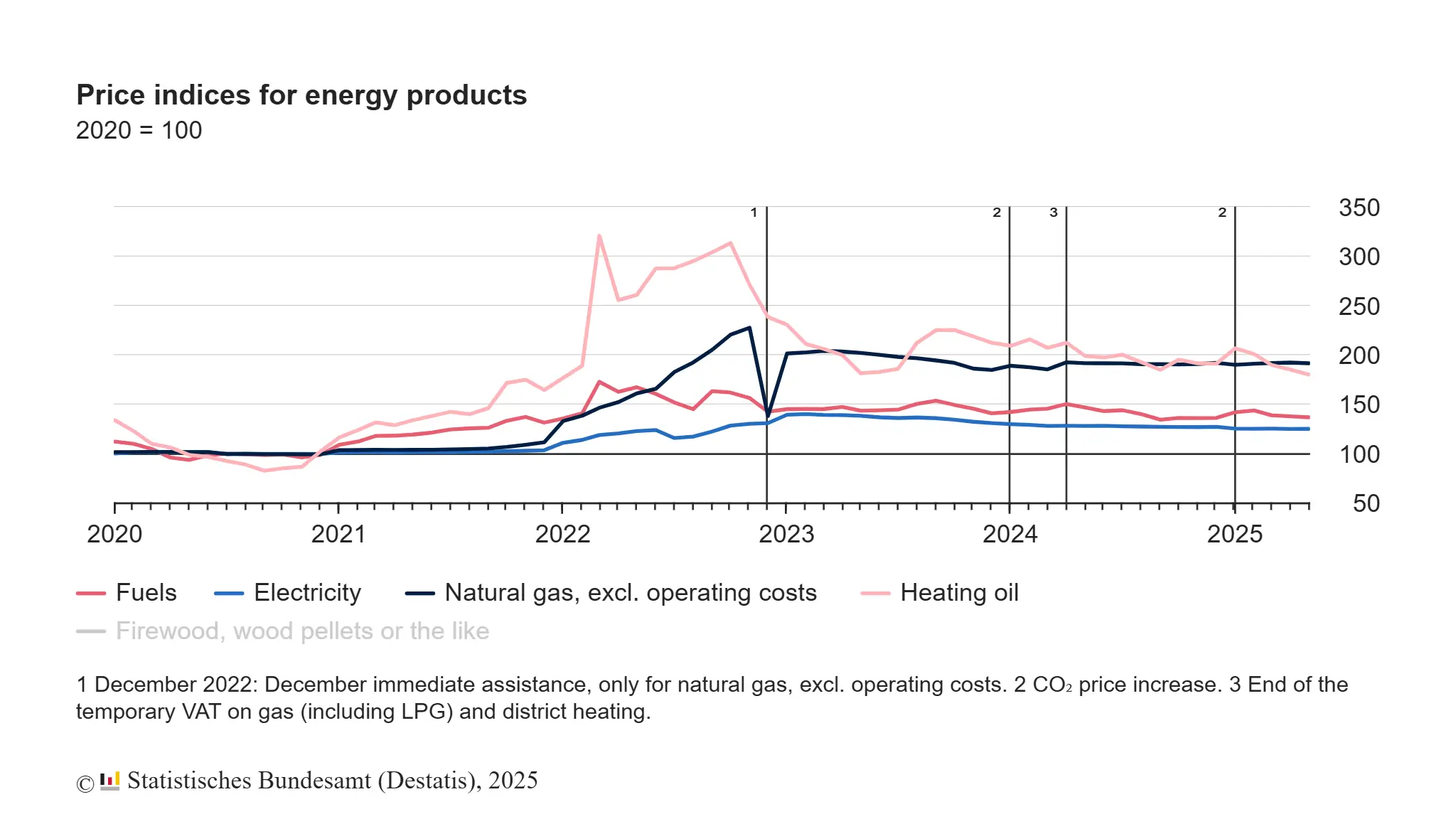
Germany’s annual inflation rate stabilized at 2.1% in May 2025, unchanged from April, according to the final report released by the Federal Statistical Office (Destatis). This follows a gradual decline from the 2.3% inflation seen in January and February. The latest figures highlight a mixed inflation landscape, with energy prices falling and food and service sectors driving up overall costs.


Energy prices in Germany were 4.6% lower in May 2025 compared to May 2024, easing inflationary pressure on households. However, this decline was less steep than the 5.4% drop recorded in April 2025, indicating a slight moderation in the rate of energy price decreases.
Key details include:
This gradual easing in energy costs follows several years of volatility influenced by regulatory changes, including CO₂ pricing and temporary VAT adjustments.

Despite the drop in energy prices, inflation pressures remain due to rising food and service expenses:
Services inflation was also significant, with prices climbing 3.4% overall, driven by:
Housing costs, measured by net rents, increased moderately by 2.1%.
Economist Silke Tobler from the Institute for Macroeconomics and Business Cycle Research (IMK) commented on the outlook:
“The key takeaway from May’s data is the continued moderation in service price growth. Coupled with the euro’s appreciation and easing energy costs, we expect inflation to stay below 2% in 2026.”
This outlook suggests that while food and service price inflation may persist, the downward trend in energy costs will help keep overall inflation in check.